Radio Frequency (RF) SHIELDING
UNDERSTANDING RF (RADIO FREQUENCY)
Radiofrequency (RF), a form of electromagnetic radiation, is non-ionizing and has low energy. It is made up of electric and magnetic fields that travel through space as waves, falling within the longer wavelength range of the EMR spectrum, from 3 kHz to 300 GHz.
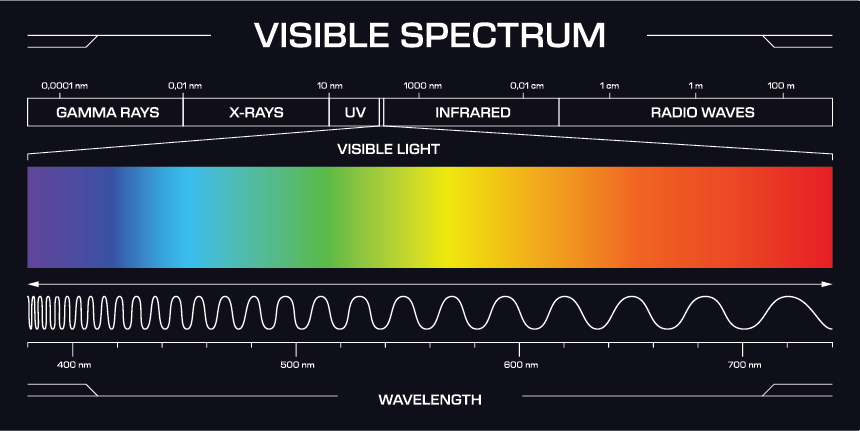
RF technology provides wireless communication for voice, internet and data, versatility across various industries, and support for mobility, scalability, and real-time communication. While facing challenges like interference and limited range, RF technology continues to advance and remains essential for IoT and 5G networks. However, it’s important to note that interference from other electronic devices can affect the quality and reliability of RF signals, potentially leading to security risks and decreased performance as the number of wireless devices utilizing the RF spectrum increases.
WHAT ARE RADIO FREQUENCIES?
At their core, radio frequencies are simply electrical currents. Like sound waves, electrical currents pulse, or oscillate, at certain speeds; the rate, at which a current pulses, in cycles per second, is called its frequency (or Hertz, abbreviated Hz). The range of frequencies usually being referred to when one speaks of radio frequencies, or RF, is between approximately 3,000 Hz (3 kHz) and 300,000,000,000 Hz (300 GHz). It should be noted that this range includes much more than your standard AM/FM radio, which operates between approximately 300 kHz and 300 MHz. Radio frequencies, and the specific uses allowed at each frequency, are regulated by the government.
The Importance of RF Energy
Energy that falls into the spectrum described above, or RF Energy, has a number of special properties. For our purposes, the most important property is that the energy in an RF current can radiate from a conductor into free space as electromagnetic waves (radio waves). While this concept is the basis for directed wireless communication (your AM\FM radio, Wi-Fi, Cell phone, etc.), RF energy is also created in many other ways.
RF energy is generated by most standard equipment used in today’s workplace. Computer chips (microprocessors), monitors, printers, wires: all generate signals that can be monitored, recorded, and reconstructed. Computers are already an indispensable part of the modern world; as they become smaller, lighter, and more capable, the signals that they can generate are also receiving more scrutiny.
.
INTERNAL VS EXTERNAL
The federal government of the United States has recognized the threat posed by RF energy emanating from equipment inside office space and work facilities. Modern eavesdroppers do more than stand around the corner listening to your conversation; sophisticated agents can monitor electronic communications from a great distance. For this reason, government facilities are required to protect themselves through a variety of technical security countermeasures designed to reduce or eliminate the ability of RF energy generated inside the facility to leak out and thus be exploited.
Problems caused by RF energy are not one way concerns. Sensitive electronic equipment can be interfered with by external signals; directed energy can be used to “flood” an area for eavesdropping purposes; and exceptionally high levels or direct contact can induce sickness or burns in humans. For this reason, many companies who operate such equipment, or who electronically store and process sensitive information, often choose to survey the potential location(s) before building a new facility.
.
SHIELDING AGAINST RF RADIATION
Shielding is a technique used to decrease the impact of electromagnetic fields by using barriers made of conductive or magnetic materials. It’s commonly used to isolate electrical devices within enclosures and to protect cables from interference. This type of shielding, specifically blocking radio frequency electromagnetic radiation, is referred to as RF shielding.
By implementing shielding, the interference from radio waves, electromagnetic fields, and electrostatic fields can be minimized. A Faraday cage, a conductive enclosure, is also used to block electrostatic fields. The effectiveness of the shielding depends on factors such as the material used, its thickness, the size of the shielded area, the frequency of the fields, and the design of the shield in relation to the electromagnetic field.
SIGNALS DEFENSE RF Window Films
Signals Defense (SD) RF window films provide both RF/IR attenuation, or weakening, of both RF emissions as well as infrared (IR). Radio Frequency or RF emissions are radio waves while IR is made up of light waves, but our SD RF window films work equally well against either threat. Windows without RF window films are highly susceptible to intrusion by hacking of wifi or other wireless networks and eavesdropping via the use of IR microphones.
SD RF window films have the added benefit of blocking ultraviolet light from the sun as well, which allows you more control over the temperature in your building and dramatically reduces sun damage to your furnishings and even your own body. Our RF window films, in short, are an unobtrusive way to change your windows from sources of vulnerability to sources of strength.

OTHER RF SHIELDING PRODUCTS
ULTRA NT RADIANT BARRIER rFoil:
RF foils are designed to be used in SCIFs (Sensitive Compartmented Information Facilities) and confidential spaces. These foils protect walls, floors and ceilings from RF (Radio Frequency) and increases sound attenuation. Minimum shielding effectiveness is (100MHz – 10GHz): 85dB. Our line of rFoil products have superb RF shielding effectiveness.
RF shielding, Radiant Barrier, SCIF Barrier, Vapor Barrier, and more: rFOIL 1800 Ultra NT Radiant Barrier for SCIF’s is the solution for your SCIF construction.
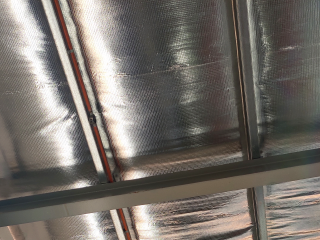
RF TAPE
rFoil Aluminum Foil Tape: rFoil tapes are designed for sealing seams in all Aluminum Surface rFoil products and they are ideal for use in heat repelling applications.
3M 1170 Conductive Adhesive Tape: 3M electrically conductive tape is designed for SCIF applications and ideal for ground and EMI/RFI shielding in rooms, equipment and components.
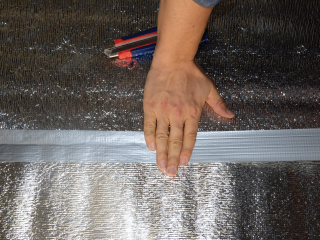
RF Paint, Wallpaper, and Caulk
RF Paints, wallpapers, and caulk:
The final touch to create an RF “cocoon” around your building is the application of Radio Frequency or electrically conductive paint or paper.
For use both indoors and outdoors, our RF paints and papers provide an electroconductive, RF attenuating coating that may be used in areas where rFoil is difficult to apply, such as floors, wood frames, or any irregular surface.
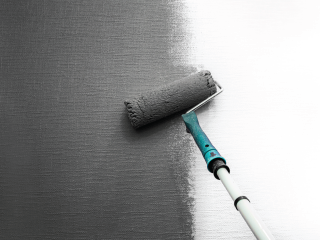
SIGNALS DEFENSE AND RF WINDOW FILM
Signals Defense was founded over 22 years ago by designing an innovative, optically clear, RF / IR window shielding technology that provides extremely high levels of Radio Frequency (RF) shielding and Infrared (IR) protection.
Initially, our main clients were the most sensitive agencies for the US government involving the use of highly classified material, but as internet use and technology became more widely spread, our business expanded to include all types of commercial, governmental, and private clients. Having been at the forefront of RF shielding technology for two decades, we now have a full suite of products to keep your office building or home safe from cyber intrusions:
ELECTROMAGNETIC SHIELDING
Electromagnetic shielding is the practice of reducing the electromagnetic field in a space by blocking the field with barriers made of conductive or magnetic materials. Shielding is typically applied to enclosures to isolate electrical devices from their surroundings, and to cables to isolate wires from the environment through which the cable runs. Electromagnetic shielding that blocks radio frequency electromagnetic radiation is also known as RF shielding.
The shielding can reduce the coupling of radio waves, electromagnetic fields and electrostatic fields. A conductive enclosure used to block electrostatic fields is also known as a Faraday cage. The amount of reduction depends very much upon the material used, its thickness, the size of the shielded volume and the frequency of the fields of interest and the size, shape and orientation of apertures in a shield to an incident electromagnetic field.
RELATED BLOG ARTICLES

Safeguard Sensitive Data with Emission Security
Safeguard Sensitive Data with Emission SecurityDid you know that emission security is a critical component of facility protection in sectors handling sensitive data? For over 25 years, Signals Defense has specialized in advanced RF (Radio Frequency) and IR (Infrared)...
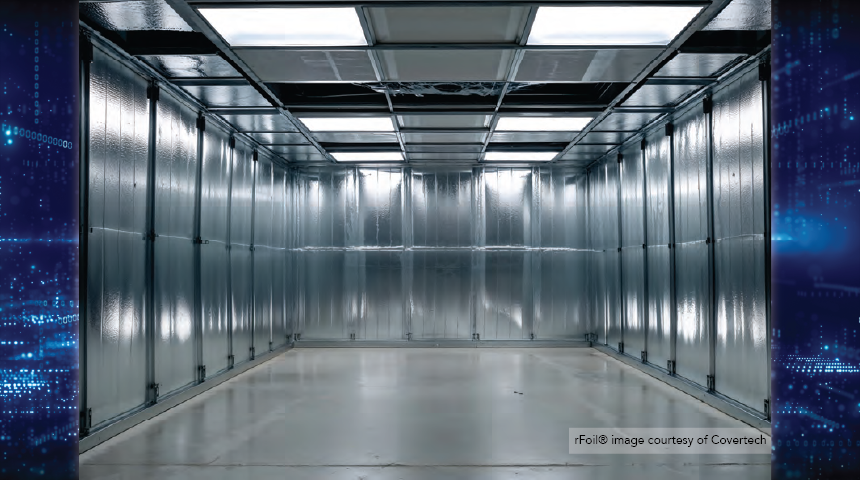
Reflective Insulation for Secure Work Environments
rFoil®: Reflective Insulation For Secure EnvironmentsAre you working on building a secure work environment, secure space, or SCIF in your facility? As an authorized distributor of CoverTech Fabricating, Inc.'s industry-leading Ultra NT rFoil®, Signals Defense carries...
OFFICE LOCATION
3 Easter Court
Suite L
Owings Mills, MD. 21117

